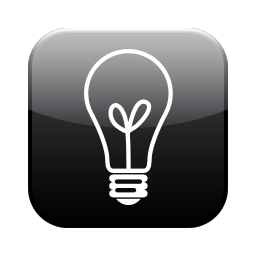Electrical Control Systems: Innovation for Your Business
In the dynamic landscape of modern industry and commerce, the ability to precisely manage, automate, and optimize processes is no longer a luxury – it’s a competitive necessity. At the heart of this operational excellence lie Electrical Control Systems. These sophisticated networks of devices and software act as the central nervous system for machinery, production lines, and entire facilities, dictating how power is delivered, how equipment operates, and how information flows. For businesses across various sectors, from manufacturing and logistics to commercial buildings and infrastructure, investing in advanced electrical control systems represents a profound opportunity for innovation, driving efficiency, enhancing safety, and fostering unprecedented levels of productivity.
What Are Electrical Control Systems?
At their core, electrical control systems are designed to regulate the behavior of machines, devices, or other systems using electrical signals. They range from simple relays controlling a single motor to complex, integrated networks managing entire factory floors. Key components often include:
- Sensors: Devices that detect changes in physical conditions (temperature, pressure, position, light, etc.) and convert them into electrical signals.
- Controllers: The «brains» of the system, such as Programmable Logic Controllers (PLCs), microcontrollers, or computers, that process input from sensors and execute predefined logic.
- Actuators: Devices that convert electrical signals into physical action (e.g., motors, valves, solenoids) to control machinery.
- Human-Machine Interfaces (HMIs): User interfaces that allow operators to monitor and interact with the system.
- Wiring and Communication Networks: The physical pathways and protocols (like DALI, KNX, Ethernet/IP, Modbus) that enable components to communicate.
Together, these components create a feedback loop that allows processes to be automated, monitored, and adjusted in real-time, moving businesses beyond manual operations to intelligent, data-driven performance.
Driving Business Innovation Through Control
The true power of electrical control systems lies in their ability to enable innovation across several critical business areas:
- Unparalleled Efficiency and Productivity:
- Automation of Repetitive Tasks: Control systems automate mundane, repetitive, or hazardous tasks, freeing human workers for more complex and value-added activities. This leads to faster cycle times and consistent output.
- Optimized Resource Use: Precision control over motors, pumps, and other electrical loads minimizes energy waste, leading to significant reductions in utility bills. For example, in lighting control systems, daylight harvesting and occupancy sensors ensure light is only used when and where needed.
- Reduced Downtime: By continuously monitoring equipment performance and detecting anomalies, control systems can facilitate predictive maintenance, alerting operators to potential failures before they occur, thus minimizing costly unplanned downtime.
- Enhanced Safety and Compliance:
- Hazardous Environment Management: In industries with dangerous processes, control systems remove human operators from direct exposure to risks, managing machinery from a safe distance.
- Automated Safety Protocols: Built-in safety interlocks and emergency shutdown procedures are programmed directly into the control systems, ensuring immediate and automatic responses to unsafe conditions, thereby protecting personnel and assets.
- Regulatory Adherence: Modern control systems help businesses comply with stringent industry standards and electrical safety regulations by ensuring operations adhere to defined parameters and providing audit trails of process data.
- Superior Product Quality and Consistency:
- Precision Control: Automated electrical control systems execute tasks with extreme precision and repeatability, virtually eliminating human error in production processes. This results in consistent product quality from the first item to the last.
- Real-time Adjustments: Sensors feeding data to controllers allow for immediate, micro-adjustments to process parameters, ensuring products meet exact specifications throughout the production run. This is crucial in industries where tight tolerances are paramount.
- Data-Driven Decision Making:
- Operational Visibility: Modern electrical control systems are excellent at data acquisition. They collect vast amounts of real-time operational data, from energy consumption and machine performance to temperature and pressure readings.
- Actionable Insights: This data can be analyzed to identify trends, pinpoint inefficiencies, optimize processes, and forecast future needs. For businesses aiming for continuous improvement, this data is invaluable for making informed strategic decisions.
- Integration with IT Systems: Increasingly, industrial control systems are integrating with enterprise resource planning (ERP) and manufacturing execution systems (MES), creating a unified data flow that breaks down operational silos.
Key Electrical Control System Technologies Fueling Innovation
The innovation within electrical control systems is propelled by several interlocking technologies:
- Programmable Logic Controllers (PLCs): The workhorses of industrial automation, PLCs are robust, highly reliable digital computers designed for automating specific electromechanical processes. Their versatility makes them indispensable for everything from simple machine control to complex production lines.
- Supervisory Control and Data Acquisition (SCADA) Systems: SCADA provides the overarching monitoring and control capabilities for large-scale processes. It collects data from PLCs and other devices, displays it on HMIs, and allows operators to issue commands and manage operations from a centralized location.
- Distributed Control Systems (DCS): Similar to SCADA but typically used in continuous process industries (e.g., chemical, oil & gas), DCS offers a higher degree of localized control and redundancy, ensuring process stability and reliability.
- Human-Machine Interfaces (HMIs): HMIs are the bridge between human operators and the complex control systems. Modern HMIs are intuitive, graphical touchscreens that provide real-time data visualization, alarm management, and easy control of processes, enhancing operational efficiency and reducing training time.
- Industrial Internet of Things (IIoT) & Edge Computing: Connecting sensors, machines, and control devices to the internet (or local networks) allows for massive data collection, remote monitoring, and predictive analytics. Edge computing processes data closer to the source, reducing latency and enabling quicker decisions for critical applications.
- Variable Frequency Drives (VFDs): These electrical control systems precisely regulate the speed and torque of AC electric motors. By matching motor speed to the actual load requirements, VFDs can achieve significant energy savings, especially in applications like pumps, fans, and conveyors.
- Advanced Sensors and Actuators: The continuous development of more precise, durable, and intelligent sensors (e.g., smart sensors with embedded processing) and actuators is expanding the capabilities and accuracy of control systems.
Implementing Control Systems for Your Business
For any business looking to leverage electrical control systems for innovation, the implementation process should be strategic:
- Needs Assessment: Clearly define the pain points, operational goals, and areas where automation will yield the greatest impact.
- System Design: Collaborate with experienced electrical engineers and automation specialists to design a system that meets current needs while allowing for future scalability and integration.
- Component Selection: Choose high-quality, reliable components (PLCs, sensors, drives, HMIs) that are compatible and robust for your specific industrial environment.
- Programming and Integration: The core of implementation involves meticulous programming of controllers and seamless integration with existing machinery and IT infrastructure.
- Testing and Commissioning: Rigorous testing ensures the system operates as intended, reliably and safely, before full deployment.
- Training and Support: Comprehensive training for your team is crucial for successful adoption, along with ongoing maintenance and technical support to ensure optimal long-term performance.
The Future is Intelligent Control
Electrical control systems are more than just wires and circuits; they are the architects of a smarter, safer, and more productive future for businesses. By harnessing their power, companies can unlock new levels of efficiency, streamline operations, ensure stringent quality, and empower their workforce to focus on strategic initiatives rather than manual tasks. For any business striving for continuous improvement and innovation, investing in state-of-the-art electrical control systems is an investment in sustained growth and competitive advantage. Partner with experts who can help you design, implement, and maintain the control systems that will propel your business forward.





